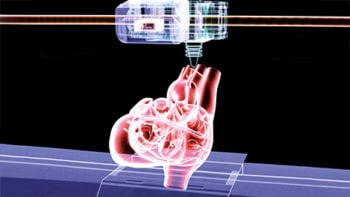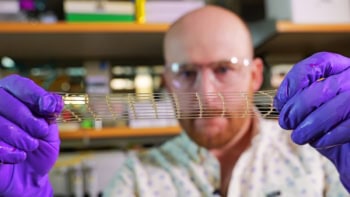
Diseases of the bile duct can lead to serious medical conditions such as liver cirrhosis and eventually liver failure. But research into these diseases, and possible treatments for them, has been frustrated by a lack of realistic models for the functional cells that line the bile duct, known as cholangiocytes.
Researchers in the Netherlands have now devised a two-step technique that exploits stem cells taken from mouse livers to create cholangiocyte-like cells (CLCs). The CLCs have the same biological characteristics as in vivo cholangiocytes, and combining the cells with hollow fibre membranes also enabled the team to construct life-like bile ducts that could transport typical bile acids (Biofabrication 10 034103).
The main function of the bile duct, and in particular the cholangiocytes that line its surface, is to carry away waste products from the liver, such as excess cholesterol, bilirubin and hormones, as well as drugs and toxins. Any damage to the lining of the bile duct can usually be repaired by the cholangiocytes multiplying themselves, but various biliary diseases can emerge when this natural mechanism breaks down. Left untreated, these cholangiopathies have the potential to get progressively worse and cause severe liver disease.
This new system offers us an unprecedented new way to analyse and modulate cholangiocyte function in vitro
Chen Chen of Utrecht University, the Hubrecht Institute-KNAW and the University Medical Center Utrecht
Although researchers have been able to culture primary cholangiocytes from different species, these cultures typically only survive for about three or four weeks. More importantly, the in vitro models that have been developed so far do not have the same physiology as natural cholangiocytes.
“To our knowledge, a source of sustainable and genetically stable stem cells that can differentiate into functional cholangiocytes has not been reported,” says study lead author Chen Chen of Utrecht University, the Hubrecht Institute-KNAW and the University Medical Center Utrecht. “Although cholangiocytes have been generated in vitro from induced pluripotent stem cells, this technique is inefficient, time-consuming and produces cells that are genetically compromised.”
According to Chen, researchers have recently found that many organs, including the stomach, intestine, liver and pancreas, contain adult stem cells that can differentiate into the cell types of the respective organ. In the liver, for example, cells marked with a specific receptor (Lgr5) can be isolated from small pieces of liver tissue. These cells can then be made to form organoids – 3D structures with the same biological properties as the organ – by creating conditions that mimic the physiological environment in which the tissue self-renews or repairs.
Building on this previous research, Chen and colleagues have now developed a two-step differentiation process to generate CLCs in vitro from mouse liver organoids. The first step exploits a hydrogel composed of collagen and Matrigel, a culture medium that contains various growth factors plus extracellular matrix components of the basement membrane. “In this first step, the liver organoids quickly proliferate, providing us with an ‘unlimited’ cell source,” explains Chen. “In the second step, we supplemented the cells with two more compounds to inhibit proliferation and enhance cell function.”
The CLCs are genetically stable and have the same morphology and biological function as primary cholangiocytes. What’s more, integrating the cells with collagen-coated hollow fibre membranes allowed the researchers to bioengineer structures that looked like native bile ducts.
This new system offers an exciting new way to analyse and modulate cholangiocyte function in vitro, Chen told Physics World. “It could help us investigate, for example, how cholangiocytes protect against bile acids and how they regulate bile acid homeostasis,” he says. “These studies will help us develop treatments for diseases of the bile duct system.”
Spurred on by their work on mouse tissue, the researchers say they will now attempt to engineer human bile ducts. “We will also be testing different tubing materials that could better mimic the liver microenvironment,” adds Chen.
- Read our special collection “Frontiers in biofabrication” to learn more about the latest advances in tissue engineering. This article is one of a series of reports highlighting high-impact research published in Biofabrication.



